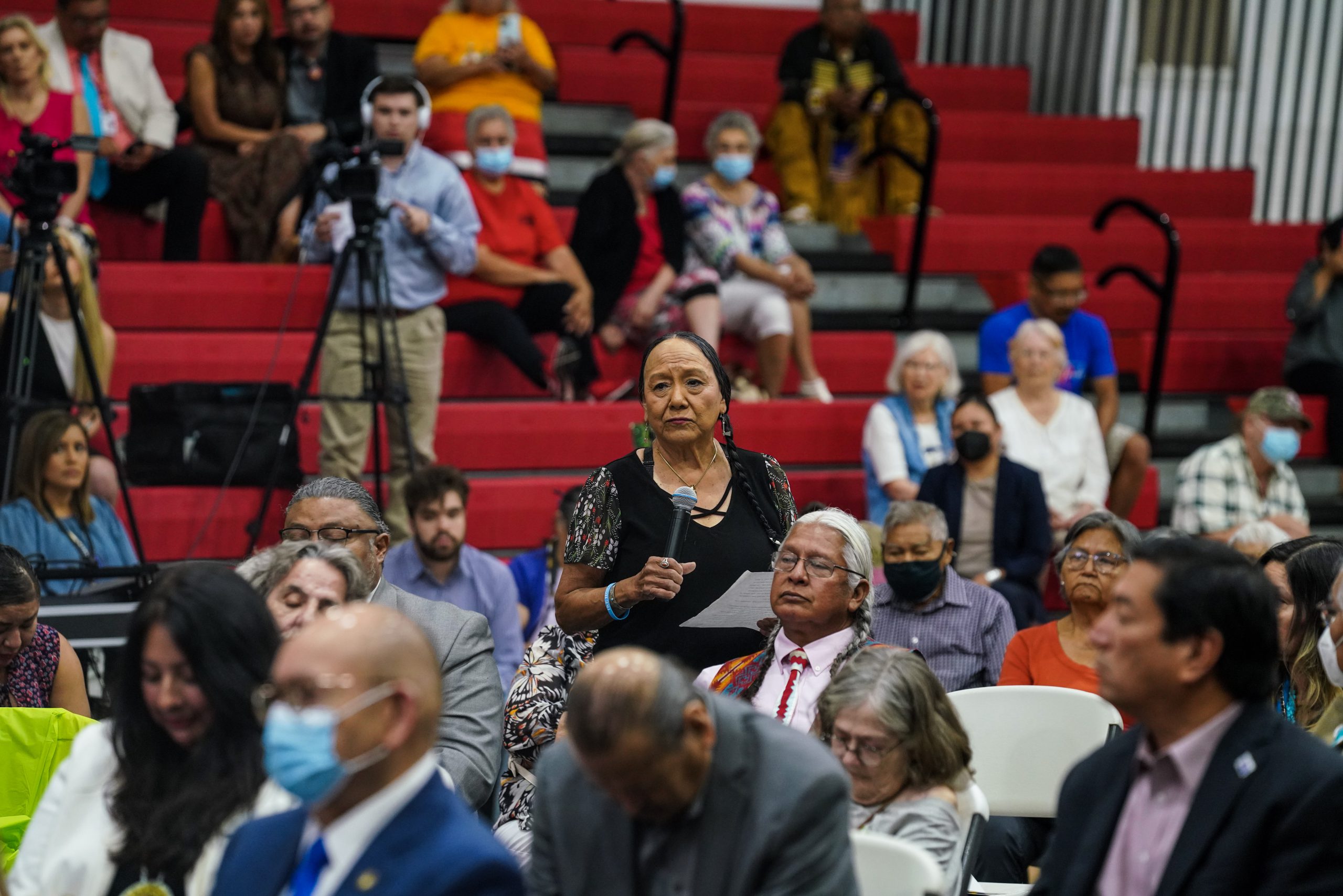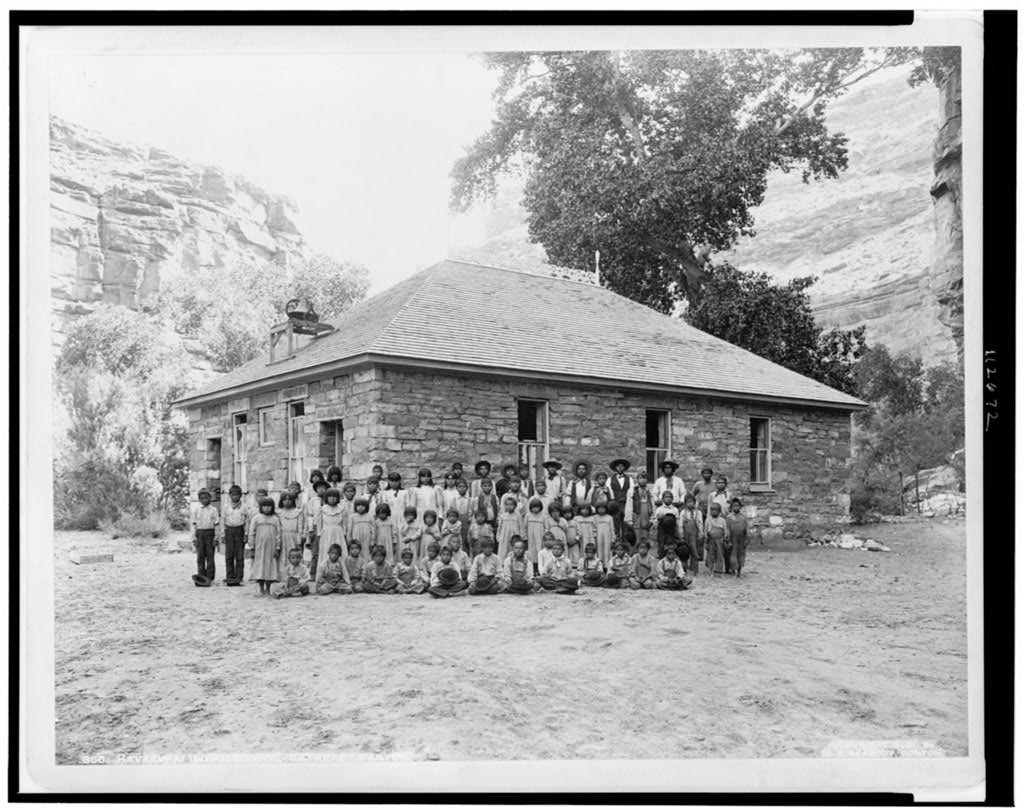Indianz.Com > News > Cronkite News: Indian boarding schools confront genocidal legacy
Tribal boarding schools much improved, but legacy of old schools remains
Tuesday, August 30, 2022
Cronkite News
WASHINGTON, D.C. — Pope Francis apologized. Interior Secretary Deb Haaland called it a “heartbreaking” part of U.S. history. Congress is considering legislation to atone for the government’s actions.
Few dispute that Indian boarding schools led to more than a century of abuse, systematically seizing Indigenous land, separating children from their families, destroying communities and working to erase tribal languages, religions, cultures and economies. Poor conditions and harsh treatment at the schools are blamed for the deaths of untold numbers of Indigenous children who were supposed to be in the government’s care.
While the abuses were in the past, the schools are not, entirely. Arizona, home to 47 federal Indian boarding schools at one point, still has eight such schools today.
Advocates say the modern schools are not perfect. But they are a far cry from the horrors of the past.
“They’re not run the way the schools were run in 1925,” said Tsianina Lomawaima, of Mvskoke (Creek) descent and a retired professor of Indigenous studies at Arizona State University.


Note: This story originally appeared on Cronkite News. It is published via a Creative Commons license. Cronkite News is produced by the Walter Cronkite School of Journalism and Mass Communication at Arizona State University.
Related Stories
Arne Vainio: We all have an opportunity to redeem (August 12, 2021)Native America Calling: Welcoming home children who died at Carlisle Indian School (July 29, 2021)
Rosebud Sioux Tribe hosts funeral services Indian boarding school students (July 19, 2021)
Photos: Lakota children spend final morning away from homelands (July 19, 2021)
Lakota youth return home after more than a century away at Indian boarding school (July 19, 2021)
Rosebud Sioux Tribe hosts prayer services in South Dakota for return of Indian boarding school students (July 16, 2021)
Rosebud Sioux Tribe hosts prayer services in Iowa for return of Indian boarding school students (July 16, 2021)
‘We are bringing them home’: Lakota youth on long overdue journey from Indian boarding school (July 15, 2021)
Cronkite News: Indian boarding school era under investigation (July 8, 2021)
City pledges action to honor lives lost at Indian boarding school (July 1, 2021)
Chuck Hoskin: Cherokee Nation acquires boarding school site (June 30, 2021)
National Native American Boarding School Healing Coalition supports federal review of Indian boarding school era (June 25, 2021)
Navajo Nation hails federal investigation into Indian boarding school era (June 23, 2021)
National Congress of American Indians welcomes boarding school initiative (June 23, 2021)
Secretary Deb Haaland: Federal Indian Boarding School Truth Initiative (June 22, 2021)
‘Our communities are still mourning’: Secretary Haaland announces federal Indian boarding school initiative (June 22, 2021)
‘I know that this process will be painful’: Secretary Haaland announces Indian boarding school review (June 22, 2021)
Secretary Haaland addresses National Congress of American Indians (June 22, 2021)
Search
Filed Under
Tags
More Headlines
Native America Calling: Native TikTok users prepare for U.S. ban
Native America Calling: Euchee food, whale hunting and young gardeners on The Menu
Cronkite News: Navajo psychiatrist addresses mental health needs
Chuck Hoskin: Tell the whole story about the theft of tribal lands
Native America Calling: A sample of Native Guitars Tour 2024
Cronkite News: Native organization carries on horse traditions
Native America Calling: How Native literature is changing the mainstream narrative
Native America Calling: No ordinary animal
Native America Calling: Safeguards on Artificial Intelligence
NAFOA: 5 Things You Need to Know this Week
Chuck Hoskin: Cherokee Nation takes the lead for our environment
Native America Calling: Earth Day assessment for Native peoples
Cronkite News: Gathering addresses ‘epidemic’ among Native people
VIDEO: Cody Desautel on tribes and federal forest management
AUDIO: Legislative Hearing on Discussion Draft of Forest Management Bill
More Headlines
Native America Calling: Euchee food, whale hunting and young gardeners on The Menu
Cronkite News: Navajo psychiatrist addresses mental health needs
Chuck Hoskin: Tell the whole story about the theft of tribal lands
Native America Calling: A sample of Native Guitars Tour 2024
Cronkite News: Native organization carries on horse traditions
Native America Calling: How Native literature is changing the mainstream narrative
Native America Calling: No ordinary animal
Native America Calling: Safeguards on Artificial Intelligence
NAFOA: 5 Things You Need to Know this Week
Chuck Hoskin: Cherokee Nation takes the lead for our environment
Native America Calling: Earth Day assessment for Native peoples
Cronkite News: Gathering addresses ‘epidemic’ among Native people
VIDEO: Cody Desautel on tribes and federal forest management
AUDIO: Legislative Hearing on Discussion Draft of Forest Management Bill
More Headlines
